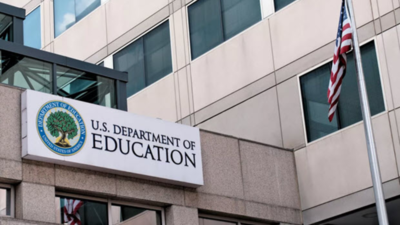As US President Donald Trump inches closer to dismantling the Department of Education (DOE), the heartbeat of the US academic system is getting faster. The aftershocks of the decision threaten to upend the foundations of the US education system. While every state will bear the brunt of the transformation, some states are bound to have a larger share of suffering. The states that are highly reliant on the federal fund flow are teetering on the brink of educational catastrophe. States with fragile tax bases, vast rural expanses, and a heavy dependence can witness a massive fallout- not only blurring the access to quality education but also withering the economic and social fabric of these vulnerable niches. From underfunded K-12 schools to college students who rely on federal grants, the potential consequences could reverberate for generations to come.
The states on the brink: Who will suffer most?
According to data from the Education Data Initiative, states with lower tax revenues, vast rural populations, and struggling school districts are the most dependent on DOE funds. The top per-student recipients of federal education dollars include:
- Alaska
- North Dakota
- Montana
- Kentucky
- South Dakota
These states benefit significantly from Title I funding, which bridges financial gaps in low-income districts. Without federal oversight, these critical resources could vanish, deepening educational inequities.
Public schools on the chopping block
The DOE’s 2024 budget of $251 billion covers vital K-12 programs, including:
- Grants for special education teachers
- Infrastructure improvements for outdated school buildings
- Support for homeless and disabled students
- Enforcement of Title IX protections against discrimination
If the DOE is dissolved, rural and underfunded schools could experience severe cutbacks, leading to closures, teacher layoffs, and diminished student services—impacting communities for generations.
Higher education in peril
Beyond K-12 education, the DOE administers federal student loans and Pell Grants, managing around $1.6 trillion in student debt. The department also provides approximately $30 billion annually in Pell Grants for low-income college students, according to a Reuters report. If dismantled, these programs’ futures become uncertain, placing millions at financial risk. States with high numbers of lower-income college attendees, such as Kentucky and West Virginia, would be hit particularly hard.
The Ripple Effect: Economic and social consequences
Public schools serve as both educational institutions and economic engines. The loss of federal education funding could lead to:
- Higher property tax burdens to offset funding losses
- Increased dropout rates due to lack of resources
- A less competitive workforce as vocational training shrinks
While Trump’s proposal to truncate the DOE remains uncertain, states heavily dependent on federal education are vulnerable to losing the most. Alaska, North Dakota, Montana, Kentucky, and South Dakota could face the harshest setbacks, with severe consequences for both K-12 and higher education. With the federal umbrella drifting apart, these states are bound to grapple with tackling the ordeals alone.


